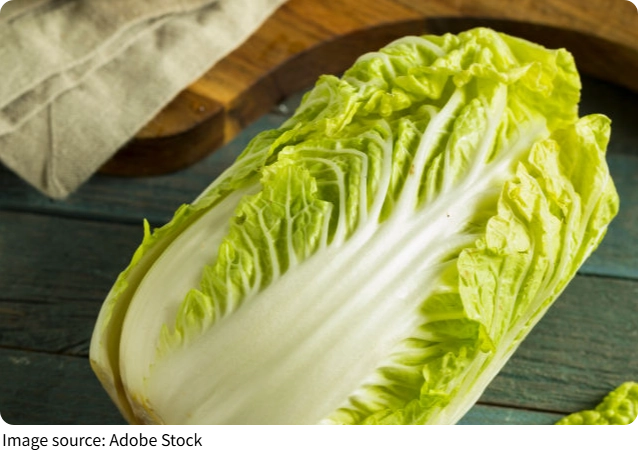Savoy Cabbage, Seriously?

Savoy cabbage rarely gets the spotlight, yet it deserves a place among everyday kitchen heroes. Many people picture overcooked, limp, pale cabbage pushed around the plate, but savoy is a different story.
With its frilly leaves, gentle flavor, and impressive nutrition, it can turn from avoid to crave with the right approach.
What Is Savoy?
Savoy cabbage is a variety of cabbage with crinkled, deeply veined leaves and a mild, slightly sweet taste. It is believed to have originated near the Savoy region in Europe and is now grown in many cooler climates. Typically in season from autumn through late winter, it shines in hearty, warming dishes when fresh produce choices feel limited.
Nutrition Highlights
Behind its pretty leaves, savoy cabbage is packed with nutrients that support overall health. It is naturally low in calories yet rich in fiber, which supports digestion and helps promote a feeling of fullness after meals. Savoy also provides vitamin C, vitamin K, folate, and other antioxidants that support immune function and cell protection.
This leafy vegetable contributes beneficial plant compounds that may help protect the heart and support healthy aging when enjoyed regularly. Because it is so light in energy yet dense in nutrients, savoy cabbage works well in meals designed for weight management or simply for eating more vegetables without feeling restricted.
How To Choose
Selecting a good savoy cabbage makes a big difference in flavor and texture. A fresh head should feel heavy for its size, with deeply colored outer leaves and a lighter, compact center. The leaves should be crisp, not limp, and the texture should shift from slightly tougher outside leaves to more tender ones as the layers move inward.
Avoid cabbages with yellowing leaves, black or dark brown edges, or a noticeably dry, cracked stump. These are signs that the vegetable has been sitting too long or stored poorly. A quick visual check and a gentle squeeze in the produce aisle can help ensure that the cabbage brought home will hold up well in the kitchen.
Smart Storage
Once purchased, savoy cabbage stores well, making it ideal for meal planning. Keep it in the vegetable drawer of the refrigerator, ideally in a breathable bag. Whole heads can often last up to a week or more when chilled properly. To maximize freshness, avoid washing the leaves until ready to cook, as excess moisture can encourage spoilage.
If the outer leaves wilt slightly over time, simply peel them away to reveal crisp inner layers that are still perfect for cooking, shredding, or adding to soups.
Prep Basics
Preparing savoy cabbage is simpler than it looks. Start by removing any damaged outer leaves and rinsing the head under cool water. Cut it into quarters, slice out the firm core, then shred or chop the leaves into ribbons or bite-sized pieces, depending on the recipe.
Savoy's natural tenderness means it cooks faster than some other cabbages. Light steaming, quick sautéing, or brief stir-frying helps it stay vibrant and pleasantly crisp-tender. Overcooking can lead to mushy texture and stronger aromas, so short cooking times usually deliver the best taste and appearance.
Healthy Pairings
Savoy cabbage fits comfortably into many balanced, nutrient-rich meals. It pairs beautifully with lean proteins such as chicken, fish, or beans, helping round out a plate with fiber and volume. For a quick, wholesome side, sauté shredded savoy with garlic, olive oil, and a squeeze of lemon.
To add crunch and healthy fats, toss cooked or raw savoy with seeds or chopped nuts. Sunflower seeds, pumpkin seeds, almonds, or hazelnuts add satisfying texture and extra minerals. A light dressing made from olive oil, vinegar, herbs, and a touch of mustard transforms shredded savoy into a refreshing slaw-style salad that keeps well for lunches.
In Cozy Dishes
Savoy cabbage is especially comforting in warming meals. Add it to vegetable-packed soups to boost fiber and micronutrients without overwhelming the broth. Its leaves soften gently and absorb flavors from herbs, stock, and aromatics, creating a satisfying bowl that still feels light.
It also works wonders in stir-fries. Toss savoy with carrots, bell peppers, spring onions or chicken, and a simple sauce made from low-sodium soy sauce, ginger, and a little sesame oil. The cabbage brings a tender yet slightly crunchy element that balances softer vegetables and proteins, turning a basic pan of ingredients into a complete, colorful meal.
Everyday Recipe Ideas
Savoy cabbage is adaptable enough to appear in multiple meals throughout the week. Try these health-focused ideas:
Use thinly shredded savoy instead of lettuce in grain bowls with brown rice, chickpeas, roasted vegetables, and a tahini-based dressing.
Fold lightly sautéed savoy into omelets or frittatas to sneak in extra greens at breakfast or brunch. Bake stuffed cabbage rolls using savoy leaves filled with lentils, brown rice, herbs, and vegetables, then simmered in a tomato-based sauce.
For a fast weeknight dish, sauté savoy with onions, carrots, and beans, then finish with herbs and a sprinkle of grated hard cheese. This combination provides fiber, protein, and complex carbohydrates in a single pan, with minimal effort and clean-up.
Gentle On Digestion
For those who find some vegetables heavy on the stomach, savoy cabbage can be a gentler choice when cooked properly. Its softer leaves often feel easier to digest than very firm varieties, especially when sliced thin and lightly cooked. Pairing it with warm liquids, such as broth or soup, can further support comfort and hydration.
Introducing it gradually can help the body adjust to its fiber content. Starting with small servings in soups or mixed vegetable dishes, then increasing portions over time, allows the digestive system to adapt while still reaping the benefits of increased plant intake.

Final Thoughts
Savoy cabbage may once have been the forgotten side dish, but it deserves a new role as a versatile, nutrient-dense staple. From crisp salads and quick stir-fries to soothing soups and hearty mains, this leafy vegetable offers flavor, texture, and impressive health benefits in every frilly leaf.
Next time a vibrant head of savoy appears at the market, why not bring it home and experiment with a new, nourishing recipe—could it become the surprise favorite in a regular meal rotation?

 · Food Team
· Food Team